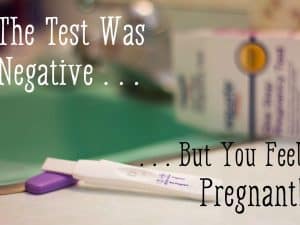
Table of Contents
An umbilical or a belly button hernia develops when a section of your intestine protrudes through the tear in your abdominal muscles close to your belly button (navel). The majority of the time, umbilical hernias are not harmful.
Infants are more likely than adults to develop umbilical hernias, but adults can still get them. When a baby screams and the belly button protrudes as a result, an umbilical hernia may become particularly noticeable. So, make sure you look out for a protruding belly button when your infant is crying. Infants with low birth weight and early birth have a higher risk of developing an umbilical hernia. It affects both boys and girls equally.
Umbilical hernias in children frequently heal on their own within the first two years of their life, although some can last up to five years or longer. The likelihood of surgical correction increases if an umbilical hernia develops during adulthood.
Keep scrolling to uncover the causes, symptoms, and treatment options of umbilical hernia.
How Does an Umbilical Hernia Develop?
There is a tiny gap in the abdominal muscles that allows the umbilical cord to pass through and connect the mother to the fetus throughout pregnancy.
After delivery, this gap in the abdominal muscles closes as the infant develops. Sometimes, a little opening remains where these muscles should have fully met and grown together. The term “umbilical hernia” refers to this hole.
Umbilical hernias are caused by excessive abdominal pressure in adults. The following factors can contribute to increased abdominal pressure:
- Multiple pregnancies
- Obesity
- Previous abdominal surgery
- Abdominal cavity liquid
- Chronic peritoneal dialysis for renal failure
Symptoms of Umbilical Hernia
A soft swelling or protrusion develops close to the navel as a result of an umbilical hernia. Babies with umbilical hernias may only be diagnosed when they cry, cough, or exert themselves. When a child is calmly lying down, a doctor can gently press on the bulge, and it will typically shrink smaller or move back into the abdomen. Children’s umbilical hernias typically cause no discomfort. Adult-onset umbilical hernias may cause abdominal pain.
The intestines can at times become entrapped with the umbilical hernia. The term used to describe this is called “incarcerated hernia”. When this happens, the child normally experiences excruciating pain, and the protrusion may be firm and red.
To prevent any harm to the intestines, immediate medical evaluation is necessary to rule out an incarcerated hernia even though this doesn’t happen very often.
Diagnosis of Umbilical Hernia
An umbilical hernia can be identified physically, and a doctor can also tell if there are any abdominal contents trapped in the hernia sac. Seek medical care if your baby
- Appears to have excruciating pain
- Starts to vomit
- Any soreness, edema, or discoloration in the hernia
Adults should follow similar rules of medical diagnosis too. If you have a protrusion at your navel, discuss it with your doctor. If the bulge starts to hurt or feel tender, get emergency care. Prompt diagnosis and care can reduce the risk of problems.
Treatment of Umbilical Hernia
By the ages of 3 to 4, many umbilical hernias heal on their own. Your baby will be advised to have surgical removal. Surgery is also recommended when the hernia turns into an incarceration or is larger than 4 cm.
The hernia repair procedure is carried out under general anesthesia. The bell button base is cut in a tiny incision. If there is any intestine in the hernia, it is reinserted into the abdominal cavity.
Then, to avoid a second hernia, the muscle opening is stitched shut. To maintain the belly button flat, a dressing and/or incision glue are applied.
Most kids can go home following surgery in a few hours, but premature infants and kids with certain medical issues might need to stay overnight in the hospital.
The Bottom Line on Umbilical Hernia
It is unlikely that the hernia will recur after it has healed. However, in patients who have wound infections after surgery, the chance of recurrence is higher.
Keep an eye out on your baby’s belly button when they cry because it starts protruding if the baby has an umbilical hernia. In adults, it can be noticed when they have
- Excruciating abdominal pain
- Vomiting
- Dark, red, or purple discolored bulge
- Full, round abdomen
- Fever
- Constipation
The only possible solution is surgery for adults. In the case of kids, you can try to wait till they are a few years old. The surgery is a fairly simple and quick operation that takes about half an hour.





